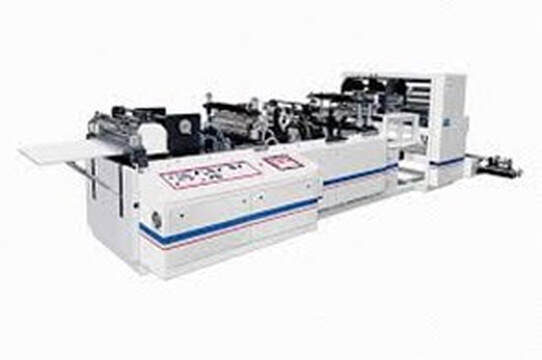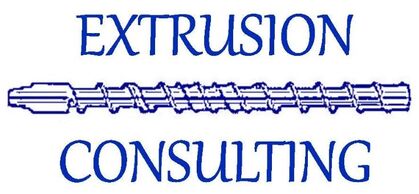This article is the first of a series of articles by industry veteran Peter Turk. This article focuses on Tooling Controls for Medical Device Extrusion. Subsequent discussions will focus on topics specific to individual component care and control, and how to implement programs to improve tooling controls. Please bookmark this space for more great topics.
November 1, 2021
Tooling Controls for Medical Device Extrusion by Peter Turk
Tooling Controls for Medical Device Extrusion by Peter Turk
Although there is major focus on robust Preventative Maintenance (PM) programs within medical device extrusion operations, one important area that is often neglected is tooling controls. The lack of a well-established tooling control program results in lost time impacting process efficiencies and product yields due to poor quality and/or defects.
What is Tooling Control?
Tooling control is a system that tracks tooling through all aspects of its use, including Incoming inspection, cleaning, and post cleaning inspection and use. The goal of tooling control is to ensure that all the components used to manufacture are not contributing negatively to product quality or line efficiency. This covers all components that are used to make product, including but not limited to the extruder barrel & screw, tooling that includes adapters, melt pump and filter (where applicable), extrusion crosshead, tips and dies. Tooling control is quite common within the extrusion industry but falls way short within many medical device manufacturers that run their own extrusion capabilities. The irony is that the requirements of medical tubing, especially visual requirements, are typically far more stringent than for wire and cable. The unique requirements of medical tubing (small diameters, thin wall, and defect free) merit tooling controls.
A well-established tooling control requires a commitment to dedicate resources to support an effective operation. Extrusion operators should be well trained in identifying tooling related issues, but this should not be their primary focus. Expecting the extrusion operators to handle a well-established system will take them away from their primary focus, making tubing. Personal dedicated to handling the tooling from end of process (breakdown) to process start (after setup) should be assigned to a separate Team. The value of tooling control can be measured in various ways. Downtime is the most powerful metric, and with a good Overall Equipment Efficiency (OEE) program, all downtime can be documented. Once an extrusion process starts there should be no downtime related to tooling issues. These issues could come in the form of unacceptable visual defects in the tubing (such as lines, gels, FM) and/or process leaks that result in tooling changes.
Tooling control systems require both dimensional and visual standards. Dimensional standards must be met to insure correct component fits. Many extrusion components (such as melt pumps and crossheads) are manufactured to specifications of ± 0.001 inches and continued use and cleaning will compromise these dimensions. The creation of dead spots and leakage due to poor fit will have a negative impact on the process. Visual standards must also be developed, typically based on actual observations specific to the company’s products. Tooling wear and damage must be documented and a system set up for easy inspection. Die lines in tubing are a perfect example of a major issue with poor die inspection and control.
Tooling used in medical extrusions undergoes a rough life. Due to short production runs and almost daily line breakdowns, the extrusion tooling goes through multiple cleaning cycles (weekly) that are detrimental to their lifespan. Most extrusion cleaning systems require temperatures around 900°F that over time take the hardness out of these precision machined components. Add in the subsequent polishing processes (often with abrasives like Scotchbrite pads) and tight tolerances and coatings can get worn relatively quickly. This sort of wear can have major consequences on process setup and efficiency, especially with more complicated processes such as multilayer extrusions.
What is Tooling Control?
Tooling control is a system that tracks tooling through all aspects of its use, including Incoming inspection, cleaning, and post cleaning inspection and use. The goal of tooling control is to ensure that all the components used to manufacture are not contributing negatively to product quality or line efficiency. This covers all components that are used to make product, including but not limited to the extruder barrel & screw, tooling that includes adapters, melt pump and filter (where applicable), extrusion crosshead, tips and dies. Tooling control is quite common within the extrusion industry but falls way short within many medical device manufacturers that run their own extrusion capabilities. The irony is that the requirements of medical tubing, especially visual requirements, are typically far more stringent than for wire and cable. The unique requirements of medical tubing (small diameters, thin wall, and defect free) merit tooling controls.
A well-established tooling control requires a commitment to dedicate resources to support an effective operation. Extrusion operators should be well trained in identifying tooling related issues, but this should not be their primary focus. Expecting the extrusion operators to handle a well-established system will take them away from their primary focus, making tubing. Personal dedicated to handling the tooling from end of process (breakdown) to process start (after setup) should be assigned to a separate Team. The value of tooling control can be measured in various ways. Downtime is the most powerful metric, and with a good Overall Equipment Efficiency (OEE) program, all downtime can be documented. Once an extrusion process starts there should be no downtime related to tooling issues. These issues could come in the form of unacceptable visual defects in the tubing (such as lines, gels, FM) and/or process leaks that result in tooling changes.
Tooling control systems require both dimensional and visual standards. Dimensional standards must be met to insure correct component fits. Many extrusion components (such as melt pumps and crossheads) are manufactured to specifications of ± 0.001 inches and continued use and cleaning will compromise these dimensions. The creation of dead spots and leakage due to poor fit will have a negative impact on the process. Visual standards must also be developed, typically based on actual observations specific to the company’s products. Tooling wear and damage must be documented and a system set up for easy inspection. Die lines in tubing are a perfect example of a major issue with poor die inspection and control.
Tooling used in medical extrusions undergoes a rough life. Due to short production runs and almost daily line breakdowns, the extrusion tooling goes through multiple cleaning cycles (weekly) that are detrimental to their lifespan. Most extrusion cleaning systems require temperatures around 900°F that over time take the hardness out of these precision machined components. Add in the subsequent polishing processes (often with abrasives like Scotchbrite pads) and tight tolerances and coatings can get worn relatively quickly. This sort of wear can have major consequences on process setup and efficiency, especially with more complicated processes such as multilayer extrusions.
© Copyright Extrusion Consulting, Inc., 2021. All rights reserved.

